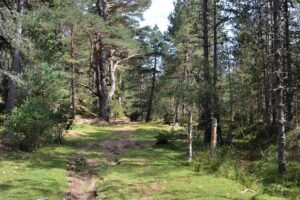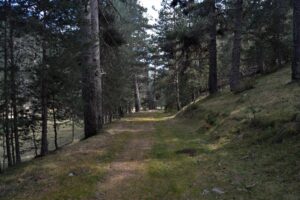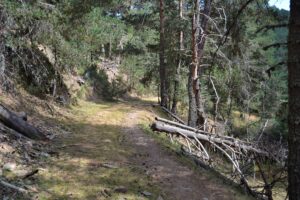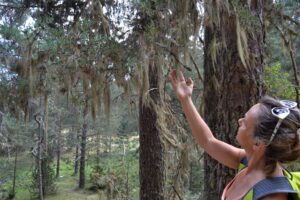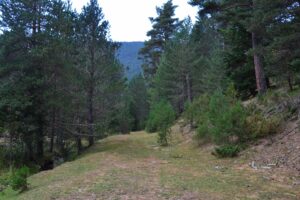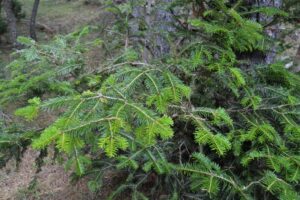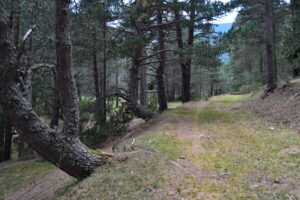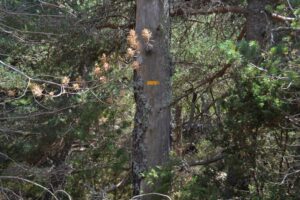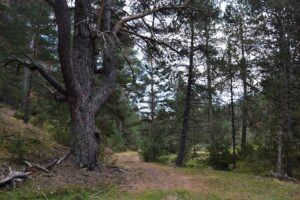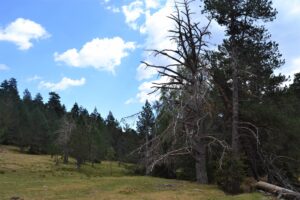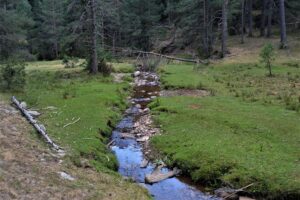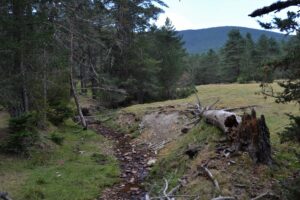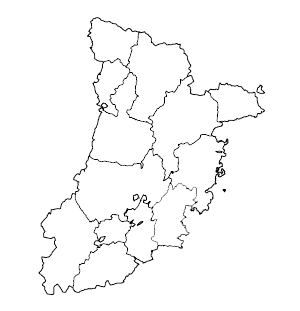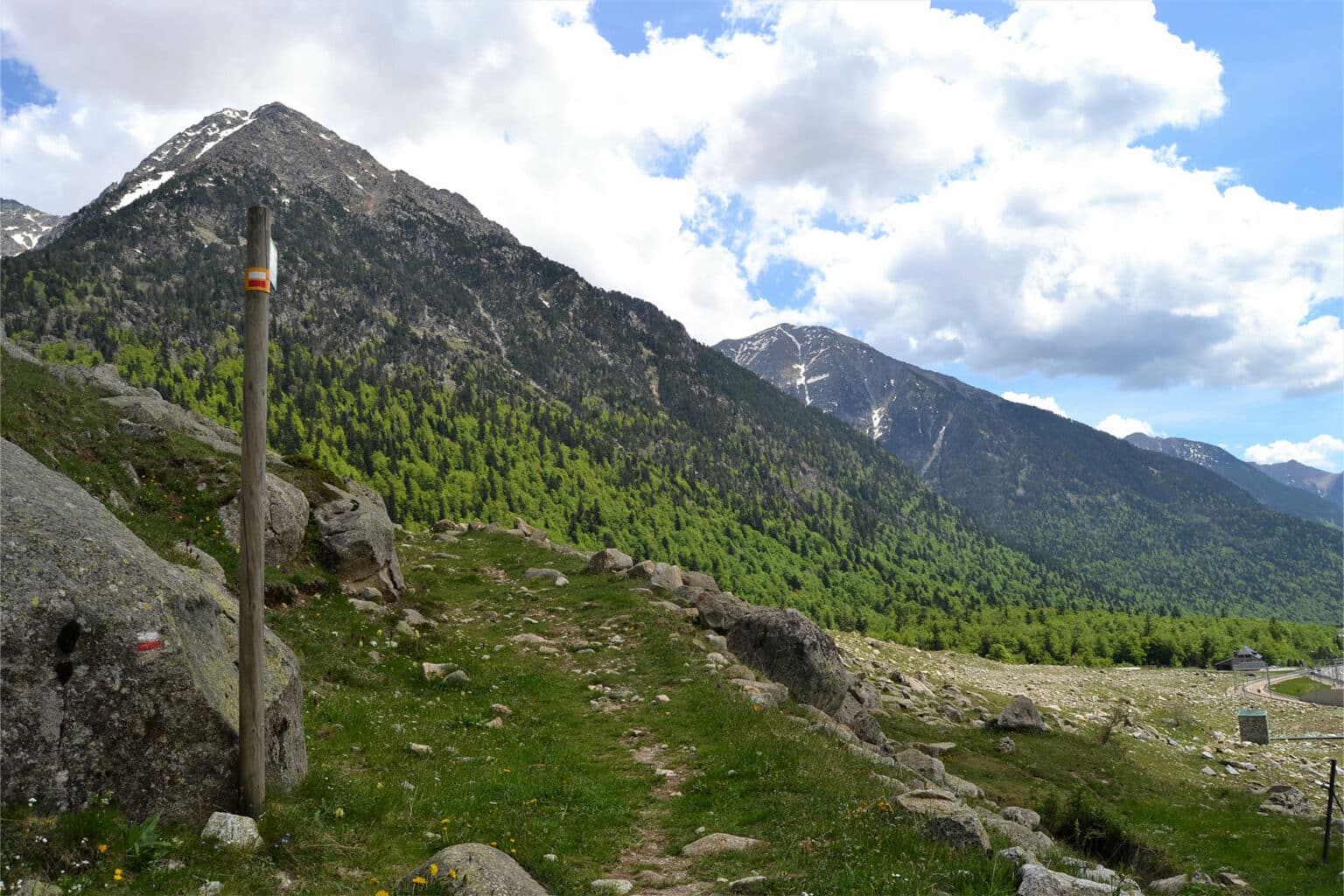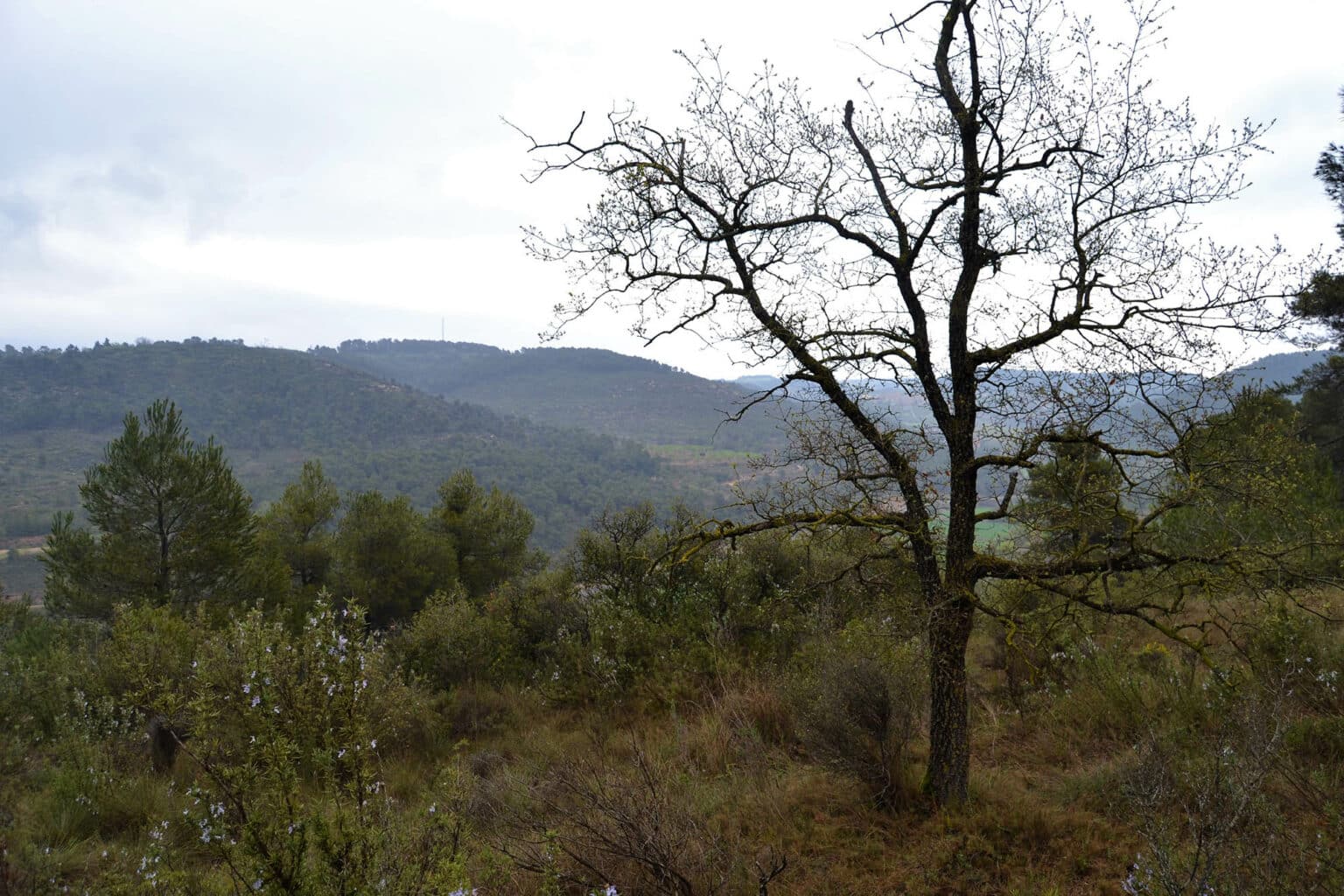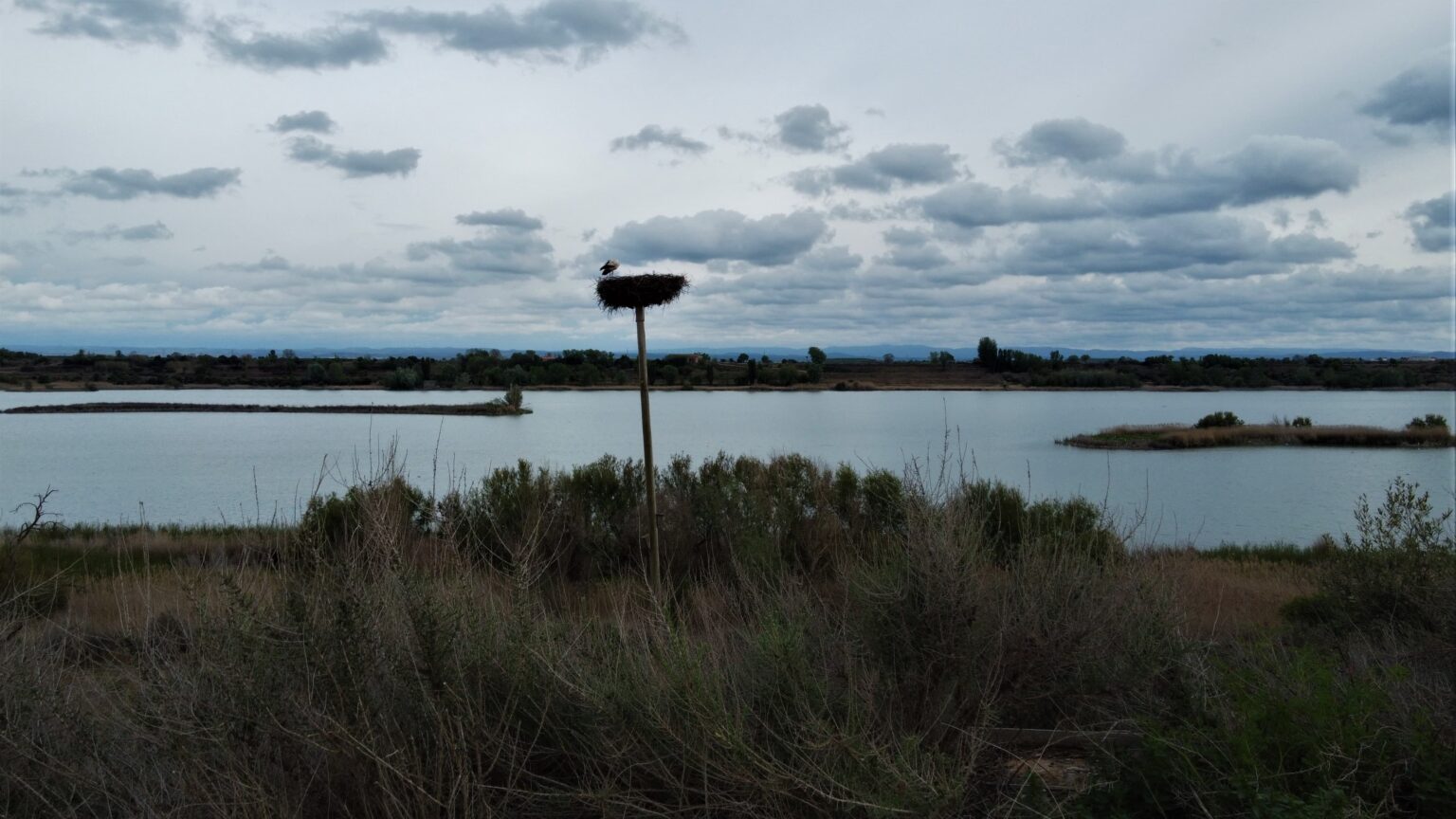FOREST BATHS
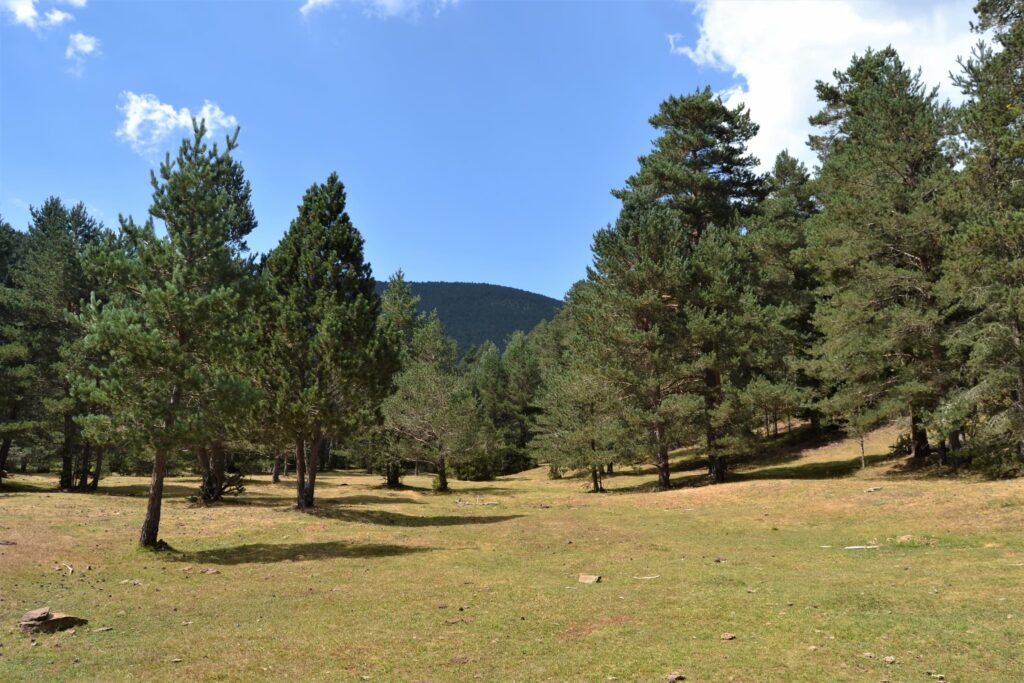
In the intimate atmosphere of The bosc de Pallerols
Surrounded by high mountains, L’Alt Urgell is an eminently mountainous comarca (local district) which is dominated by the Pyrenees and the Pre-Pyrenees. El Salòria, at 2,783 metres, and El Monturull, at 2,761 metres are the highest summits and form part of the Pyrenean Axial Zone. Puidg de la Canal Baridana (2,647m) is the highest peak in the Serra del Cadí. Part of this comarca lies within the Alt Pirineu (High Pyrenees) Natural Park, which is the largest in Catalonia and is very rich in biological variety, both in terms of fauna and flora. Amongst its essential values are its extensive coniferous forests (which include groves of Spanish pine, Scots pine and fir trees), oak groves, birch forests and ash groves, all of which will surprise visitors us with their greenness and grandeur. Alpine landscapes combine with woodland, pastures and meadows, many of which are located up above the valleys, to form a very diverse and attractive mosaic. From its high mountains, dominated by boreal alpine vegetation, to its middle and lower mountains, dominated by downy oak, holm oak and other communities of interest, which also include mixed deciduous woodlands and birch forests, among others, and not forgetting the aquatic systems, this comarca is, itself, effectively an immense forest that offers a seemingly endless range of spaces in which to enjoy forest bathing.
On this occasion, the area proposed for forest bathing is located in the small Vall de Sant Miquel valley. This is near Sant Joan de l’Erm, which lies in the westernmost sector of the municipal district of Montferrer i Castellbò. To get there, it is first necessary to travel to Sant Joan de l’Erm, where it will be possible to leave your car in the car park of the La Basseta mountain shelter. This is the starting point for numerous itineraries, of various degrees of difficulty, which even include one highly recommended route that has been specially adapted for people with reduced mobility. It is fair to say, however, that any of these routes would provide good options for forest bathing, while it is also possible to combine this activity with some of the many hiking options. There is a park information point, and also various informative panels which explain the itineraries and also provide other facts and figures about the area in general. It is important to remember that Sant Joan de l’Erm is a Nordic skiing resort (in fact, it was a pioneer in this sport). The resort is located in the Alt Pirineu Natural Park and is known for the century-old forests in the Vall de Santa Magdalena. The La Basseta mountain shelter, which is publicly owned and can provide accommodation, is located at an altitude of 1,700 metres and serves as the base for the ski resort. Amongst the previously mentioned information panels, there are some that show the cross-country skiing routes that run through lush forests of Scots pine, Spanish pine and fir trees.
It is possible to reach the Vall de Sant Miquel by car, or also on foot. On foot, it is 3.5 kilometres from the bed on which there is a fountain, which is just before the La Basseta shelter. In either case, it is necessary to follow the forest path that branches off to the left and heads towards the shrine of Sant Joan de l'Erm Nou. Going by car, once you reach the shrine, it is necessary to follow the track that leads off to the left and to go down to the Coll de Leix pass. The track continues downhill to the Coll de Leix and, once there, you will find yourself at the confluence of various paths. It is then necessary to follow the vertical signs for the Casa Forestal de Pallerols and the Vall de Sant Miquel, which will take you off to the right. Heading in this direction, you will then come to the leisure area of El Bosc de Pallerols. If you prefer to go there on foot, instead of going to the shrine of Sant Joan de l’Erm, you must follow the signs for the Coll de Leix and then head in the direction of the Casa Forestal de Pallerols and the leisure area of Pallerols. You are recommended to pay close attention to the signs, as there are numerous crossings and forks in the route before you reach the Casa Forestal/leisure area of Pallarols. It should be added that you can also go there via Canturri, by following the forest track that leads to Sant Joan de l’Erm Nou. This old manor, which nestles between the mountain shelters of La Basseta and Les Comes de Rubió, is currently closed, but there is an interesting project to turn it into research centre. About 200 metres away, at the leisure area, there is a small building that can be used as a shelter. One last warning is that that there are several tracks along which the circulation of all types of vehicles is prohibited from the end of November until the end of May. It is advisable to check their status and condition at the time of year that you want to make your visit. This can be done via the park website: parcsnaturals.gencat.cat/altpirineu.
The space for forest bathing
Once you get to the leisure area, it is necessary to follow the path that leads off to the north, where you will see a sign that prohibits the access of motor vehicles, other than those of neighbours and service providers. It is necessary to cross the footbridge over the waters of the Torrent de Sant Miquel stream, and then take the path off to the left. The stream will remain on your right. The walk is a circular route which runs from the leisure area of Pallerols, heads towards the Serrat de la Costa (a little above the Font de l’Orri spring), and then continues towards El Pla de Berbegués, before closing the circle on returning to the leisure area. The route is signposted with yellow markers and is 3.1 kilometres long. It has a variation in altitude of only 90 m, and can be completed in about 1 hour, moving at quite a leisurely pace.
From the very beginning, you will find yourself immersed in an oasis of peace and exuberance, in what seems like paradise. It is not without reason that this forest is popularly known as the Canada of Catalonia. With the crystal-clear waters of the stream, the singing of the birds, the intense green colour of the vegetation, the explosion of colours in autumn, the fragrances of the plants and flowers, the impeccably pure air, the clouds which draw shapes in the deep blue sky, and the herds of cows and wild horses, there are numerous attractions. In fact, everything is an invitation to contemplate this space and to indulge your senses and become more conscious of all the different elements that are present and which surround you.
Along the walk, you will mainly be accompanied by Scots pine (Pinus silvestris), which at this height is easy to confuse with Spanish pine (Pinus uncinata). As you advance, if you take a good look at the pine tree branches, it will be easy to see how some curious grey-green hairs hang down from them; these are lichen which are popularly known as “capuchin’s beards”, or usnea (Usnea barbata), and they are a sign of the purity of the air and of the good state of conservation of the forest. Another lichen species that is frequently seen here is popularly known as Pyrenean chicory, on account of its characteristically curly leaves. This humid environment is conducive to the proliferation of many species of vegetation and the site is covered by varied mosaic, which also includes specimens of dead, fallen and decaying trees, which are very important for trophic relationships and good indicators of the maturity of the forest. It is also important to highlight that this is the habitat of several protected species of forest bats, such as the barbastelle bat (Barbastella barbastellus), the whiskered bat (Myotis mystacinus) and the brown long-eared bat (Plecotus auritus), which take refuge in holes and cracks in the trunks of the trees.
If you take a deep breath and concentrate on your sense of smell, in a receptive way, you will note the aromatic molecules more intensely. If you are not used to smelling things like this, you will perhaps, at first, receive the aromas as a shower, all mixed together; however, as you sift through them, you will be able to better appreciate the differences between them. These scents can be found in whole plants, or in any of their constituent parts (such as roots, stems, leaves, flowers, fruits, or even seeds) and they are also linked to the different seasons of the year. Earthy, mushroom-like smells will remind you of autumn, while those of the flowers will carry you to spring. Experimenting with smells will reward you, and one of your least used senses, which will be treated to a veritable concert of aromas.
Map of the Vall de Santa Magdalena
The APP “Alt Pirineu, Deixa’t Guiar” is an application that provides information about detailed routes through the park, GPS geolocations, leisure areas, and details of the local flora and fauna, etc.
